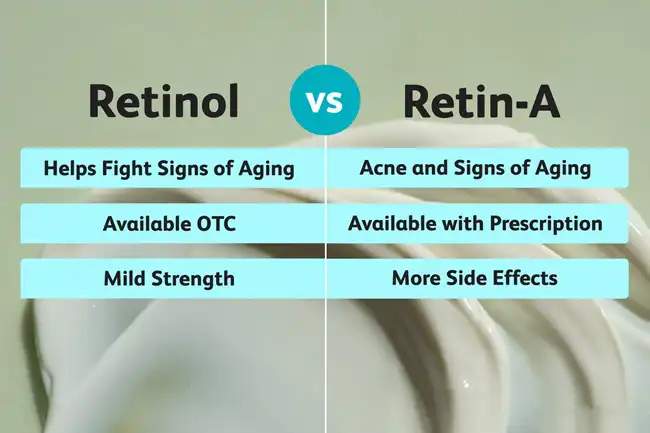How to Apply Retinol?
2024-07-26 15:45:31
Retinol, a derivative of Vitamin A, is renowned for its potent skincare benefits, ranging from anti-aging to acne treatment. However, its powerful effects also mean that improper use can lead to irritation or other skin issues. This blog will guide you through the process of applying retinol correctly, ensuring you can reap its benefits safely. We will delve into three crucial questions: How do you mix pure retinol powder with your skincare products? How do you incorporate retinol into your routine for the first time? And how can you minimize irritation when using retinol?
How Do You Mix Pure Retinol Powder with Your Skincare Products?
Pure retinol powder offers a customizable approach to skincare, allowing you to control the concentration of retinol in your products. Here's how to effectively mix pure retinol powder with your skincare products:
Understanding Retinol Powder
Retinol powder is highly concentrated, often containing around 97-99% pure retinol. This potency means it must be handled with care to avoid irritation. It's typically mixed with a neutral medium such as a moisturizer, serum, or facial oil to dilute its strength.
Choosing the Right Medium
- Moisturizer: A moisturizer is a great option for beginners. It helps buffer the retinol, reducing the risk of irritation.
- Serum: Mixing with a serum can be effective if you are looking for more potent results and are more experienced with retinol.
- Facial Oil: Facial oils can be beneficial for those with dry or sensitive skin, providing an extra layer of hydration and reducing the likelihood of dryness.
Mixing Instructions
- Start with a small amount: Begin with a very small amount of retinol powder. For example, a tiny scoop (often provided with the product) is sufficient for initial use.
- Mix thoroughly: Combine the retinol powder with your chosen medium in your palm or a small mixing dish. Ensure it's thoroughly mixed to avoid uneven application.
- Patch test: Before applying it to your face, perform a patch test on a small area of skin to check for adverse reactions.
Application Tips
- Cleanse your face: Start with a clean, dry face. This ensures the retinol can penetrate effectively.
- Apply at night: Retinol can make your skin more sensitive to sunlight, so it's best applied in the evening.
- Follow up with moisturizer: After the retinol mixture has absorbed, apply a gentle, hydrating moisturizer to lock in moisture and further reduce irritation risk.
Frequency and Adjustment
- Start slow: Begin with once or twice a week to allow your skin to acclimate.
- Gradually increase: As your skin builds tolerance, you can increase the frequency of application.
- Adjust concentration: If your skin handles the lower concentration well, you can gradually increase the amount of retinol powder you mix with your medium.
Incorporating pure retinol powder into your skincare routine allows for customization and potentially more effective results. However, always remember to start slow and pay close attention to your skin's response.

How Do You Incorporate Retinol into Your Routine for the First Time?
Starting with retinol can be daunting due to its powerful effects, but with careful incorporation, you can avoid irritation and maximize benefits.
Assess Your Skin Type
Before starting retinol, consider your skin type. Those with sensitive or dry skin should be especially cautious, starting with lower concentrations and using additional moisturizing products.
Start with Low Concentrations
If you're new to retinol, begin with a lower concentration (0.25% to 0.5%). Higher concentrations can be effective but are more likely to cause irritation for beginners.
Build a Foundation
- Cleanse: Use a gentle, non-exfoliating cleanser to clean your face.
- Moisturize: Apply a hydrating moisturizer to create a buffer, reducing the strength of the retinol.
Application Frequency
- Initial phase: Apply retinol once or twice a week to gauge your skin's reaction.
- Monitor skin response: Watch for signs of irritation, such as redness, peeling, or dryness.
- Gradual increase: If no significant irritation occurs, slowly increase the frequency to every other night or nightly over several weeks.
Layering Products
- Serum: If using a hydrating or soothing serum, apply it before retinol.
- Retinol: Apply a pea-sized amount of retinol to your entire face, avoiding the eye area and corners of the mouth.
- Moisturizer: Follow up with a moisturizer to lock in hydration and further minimize irritation.
Sun Protection
Retinol powder increases your skin's sensitivity to sunlight. Therefore, applying sunscreen every morning is crucial. Opt for a broad-spectrum SPF 30 or higher to protect your skin from harmful UV rays.
Patience and Consistency
Retinol can take several weeks to months to show significant results. Be patient and consistent with your routine, adjusting as needed based on your skin's response.
Signs You Need to Adjust
- Excessive dryness or peeling: Decrease frequency and increase moisturizing products.
- Persistent redness or irritation: Stop use for a few days and reintroduce slowly.
- Breakouts: It's common to experience an initial breakout period; however, if breakouts persist, consider consulting a dermatologist.
Starting with retinol requires a gradual and careful approach. By introducing it slowly and monitoring your skin's response, you can incorporate this powerful ingredient into your routine effectively and safely.
How Can You Minimize Irritation When Using Retinol?
Irritation is a common concern when using retinol, but there are several strategies to minimize discomfort while still reaping its benefits.
Choose the Right Formulation
Different retinol formulations can impact the level of irritation. Consider the following options:
- Encapsulated Retinol: This form releases retinol slowly over time, reducing the potential for irritation.
- Retinol Esters: These are gentler alternatives to pure retinol, such as retinyl palmitate.
- Buffered Products: Some products combine retinol with soothing ingredients to minimize irritation.
Prep Your Skin
- Hydrate: Ensure your skin is well-hydrated before applying retinol. Hydration helps fortify the skin barrier, making it less susceptible to irritation.
- Avoid Exfoliation: On nights when you use natural retinol, avoid other exfoliating products like AHAs, BHAs, or scrubs. Combining these can increase irritation.
Application Techniques
- Sandwich Method: Apply a layer of moisturizer before and after applying retinol. This method provides a buffer, reducing the potency of retinol on the skin.
- Spot Treat: If you have sensitive areas, consider applying retinol only to specific areas of concern, like fine lines or hyperpigmentation spots.
Gradual Introduction
- Patch Test: Before full application, conduct a patch test to ensure your skin can tolerate the product.
- Start Slowly: Begin with lower concentrations and increase gradually as your skin builds tolerance.
- Frequency: Start with a lower frequency (e.g., once a week) and slowly increase to prevent overwhelming your skin.
Manage Side Effects
- Moisturize Generously: Use a rich moisturizer to combat dryness and peeling. Look for ingredients like hyaluronic acid, ceramides, and glycerin.
- Use Hydrating Serums: Incorporate hydrating serums, especially those containing hyaluronic acid, to maintain skin hydration.
- Avoid Irritants: Stay away from other potential irritants like alcohol-based products or harsh cleansers.
Protect Your Skin
- Sunscreen: Apply sunscreen daily, as retinol increases sun sensitivity. Choose a broad-spectrum SPF 30 or higher.
- Limit Sun Exposure: Try to avoid prolonged sun exposure, especially during peak hours.
Listen to Your Skin
- Monitor Reactions: Pay attention to how your skin responds. If irritation occurs, reduce the frequency of use or take a break from retinol.
- Consult a Dermatologist: If irritation persists, seek advice from a dermatologist. They can provide tailored recommendations or alternative treatments.
By choosing the right formulation, preparing your skin properly, and introducing retinol gradually, you can minimize irritation and enjoy the transformative benefits of retinol.

Xi'an ZB Biotech Co.,Ltd is Retinol powder factory,we can provide Retinol capsules or Retinol supplements. Our factory also can supply OEM/ODM One-stop service, we have professional team to help you design packaging and labels. If you want to learn more, you can send e-mail to Jessica@xazbbio.com or WhatsAPP+8618591943808.
Conclusion
Retinol is a powerful tool in skincare, offering benefits from anti-aging to acne treatment. By understanding how to mix pure retinol powder, incorporating it into your routine carefully, and taking steps to minimize irritation, you can harness its full potential safely and effectively. Always remember to start slow, be patient, and listen to your skin.
For further questions or personalized advice, please contact Jessica at Jessica@xazbbio.com.
References
1. American Academy of Dermatology Association. (2023). Retinoids: A Dermatologist's Guide.
2. Mayo Clinic. (2023). Retinol for Anti-Aging: Benefits, Uses, and Side Effects.
3. Harvard Health Publishing. (2022). The Science Behind Retinoids: Anti-Aging and Acne Benefits.
4. Dermatology Times. (2022). How to Use Retinol Without Irritation.
5. Cleveland Clinic. (2023). Retinoid Treatments: How to Use Them Safely and Effectively.
6. Journal of Clinical and Aesthetic Dermatology. (2021). Retinoid Therapy: From Research to Real-World Application.
Send Inquiry
You may like
Related Industry Knowledge
- What Are the Uses and Benefits of Mogroside V?
- How Long Does Hydroquinone Take to Work?
- Can Diabetics Take Coenzyme Q10?
- What Are Ferulic Acid's Antioxidant Properties?
- Is Xanthan Gum Powder Safe?
- How to Use Alpha Arbutin?
- When To Take Beta Ecdysterone?
- Does Phytosterols Reduce Testosterone?
- What Is Glycyrrhizic Acid Used For On Skin?
- What Is The Use Of Choline Chloride Powder?


